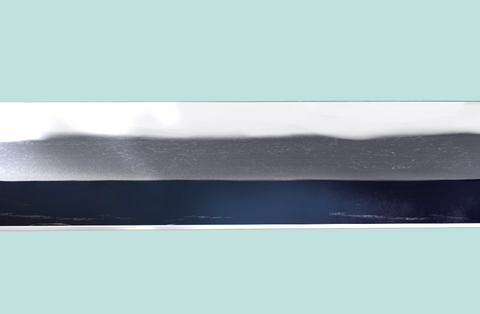Hiro-suguha in Japanese Katana terminology
広直刃 (Hiro-suguha)
What is Hiro-suguha in Japanese Katana terminology?
Hiro-suguha refers to a type of blade pattern (Hamon) in Japanese swords. Among the straight blade pattern (Hamon)s (Suguha), Hiro-suguha is characterized by its particularly wide tempering width (Yakihaba).
This blade pattern (Hamon) can be seen in ""粟田口物"" (Awataguchi-mono), ""来物"" (Rai-mono), ""古備前物"" (Old Bizen-mono), ""古青江物"" (Old Aoe-mono), and ""古三原物"" (Old Mihara-mono). Many of them are mixed with small irregularities (Komidare) and feet (Ashi).
It has been said since ancient times that swords with a Nie-deki (a state where Nie, tiny crystals, cover the entire blade pattern (Hamon)) are prone to breaking, and Hiro-suguha is also prone to strength defects, so it was rarely made during the Shinto period.
There is a theory that the sharpness of a sword is related to whether it is a straight blade or an irregular blade (Midareba), but this is denied in modern times. It is a common theory that the causes of a sword breaking, bending, or having poor sharpness are not the type of blade pattern (Hamon), but various reasons such as the shape of the sword, the skill of tempering, and the skill of the user.
The favorite sword of ""東郷平八郎"" (Togo Heihachiro), a Marshal of the Imperial Japanese Navy during the Meiji era, is the ""刀 銘 備前国住長船十郎左衛門尉春光"" (Sword Inscription: Bizen Kuni Ju Osafune Jurozaemon no Jo Harumitsu). This Hiro-suguha-style sword was forged by ""長船春光"" (Osafune Harumitsu), a swordsmith who was active in Bizen Province (now the eastern part of Okayama Prefecture) during the late Muromachi period. It is a sword that well represents the characteristics of the late Bizen-mono.







